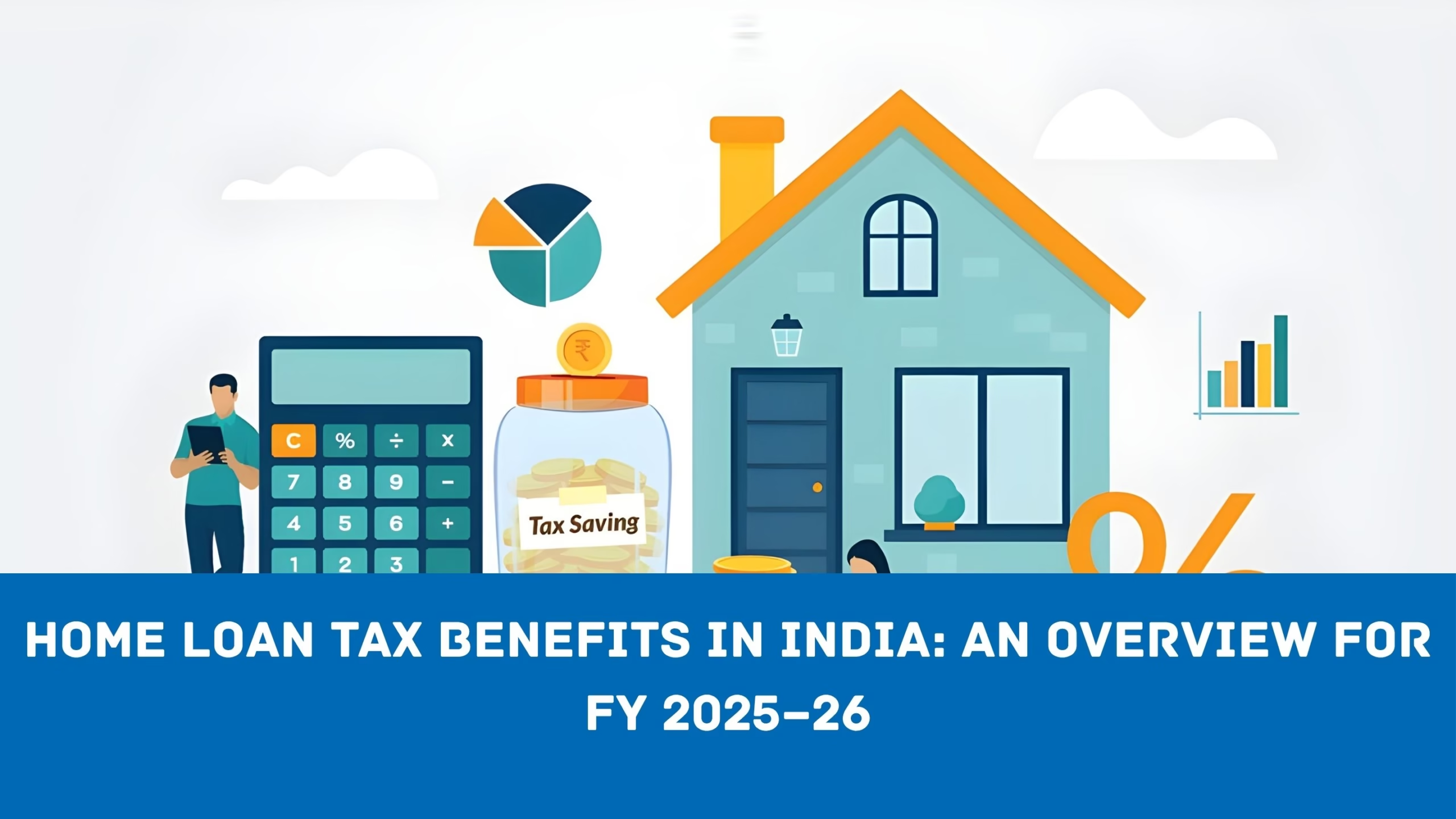Home Loan Tax Benefits in India: An Overview for FY 2025–26


Buying a home is more than a milestone—it’s a smart financial decision, especially when you take full advantage of home loan tax benefits available in India. Under the Income Tax Act, the government offers generous deductions on both the principal and interest components of home loan repayments, significantly reducing your tax burden.
Key Deductions You Can Claim:
Section 80C: Allows deduction of up to ₹1.5 lakh annually on principal repayments, including payments towards stamp duty and registration charges.
Section 24(b): Offers a deduction of up to ₹2 lakh per year on interest paid for self-occupied homes. For rented properties, there’s no cap, but losses under ‘Income from House Property’ can be carried forward up to 8 years.
Section 80EEA: Additional benefit of up to ₹1.5 lakh on interest for first-time homebuyers purchasing affordable homes (property value under ₹45 lakh, loan sanctioned by March 31, 2026).
Example:
If you repay ₹1.4 lakh as principal and ₹2.5 lakh as interest in one financial year:
₹1.4 lakh qualifies under Section 80C.
₹2 lakh qualifies under Section 24(b).
The remaining ₹0.5 lakh may qualify under 80EEA (if eligible).
By planning smartly, a borrower can claim up to ₹5 lakh or more in deductions annually.
Note: These benefits are applicable only if you opt for the old tax regime. Under the new regime, these deductions are not available (except under certain conditions for rented properties).
Tax Benefits on Home Loan for Different Types of Buyers
Different categories of buyers can leverage home loan tax benefits differently. Here’s a breakdown based on buyer type:
1. First-Time Homebuyers
Eligible for Section 80EEA, giving an additional ₹1.5 lakh deduction on interest.
Ensure the home value is under ₹45 lakh and the loan is sanctioned before March 31, 2026.
Can claim 80C (₹1.5 lakh), 24(b) (₹2 lakh), and 80EEA (₹1.5 lakh) — totaling up to ₹5 lakh.
2. Salaried Professionals
Can claim HRA and home loan deductions simultaneously, if living in rented accommodation.
Benefit from employer-formatted tax declarations using Form 12BB.
If you co-own the property and co-borrow the loan, both owners can individually claim tax benefits, effectively doubling the deduction limits.
3. Self-Employed Individuals
Can claim the same deductions under Sections 80C, 24(b), and 80EEA, provided they maintain proper documentation.
In some cases, interest paid on property used for business purposes may also be claimed as a business expense, offering an additional advantage.
Should maintain bank statements and loan amortization schedules to validate claims during audits.
| Buyer Type | Deduction Available | Pro Tips |
|---|---|---|
| First-time Buyer | 80C, 24(b), 80EEA | Opt for affordable housing; co-own for more |
| Salaried Professional | 80C, 24(b), HRA | Claim both HRA & loan benefits where eligible |
| Self-Employed | 80C, 24(b), 80EEA | Maintain proper documentation and books |
How to Claim Home Loan Tax Benefits Efficiently
Maximizing tax benefits on home loan not only depends on eligibility but also on how well-prepared and timely your submissions are. Here’s a practical guide:
Required Documents:
Loan repayment certificate from the lender showing interest and principal breakup.
Possession certificate or completion certificate, especially important for under-construction properties.
Home ownership proof, such as sale deed or allotment letter.
Co-ownership agreement, if claiming deductions jointly.
Common Mistakes to Avoid:
Claiming deductions before possession: Interest paid during the construction phase can only be claimed after possession, in five equal installments over five years.
Claiming without proof: Without an interest certificate or proper documentation, claims can be rejected during assessment.
Ignoring joint loan benefits: If two people repay a joint loan, both can claim full deductions individually if both are co-owners and co-borrowers.
Smart Tax Planning Tips:
Pay an additional EMI just before the financial year ends (March) to increase your deduction under 80C.
If eligible under both 24(b) and 80EEA, structure your repayments to claim both benefits fully.
Review old vs. new tax regimes annually—those with significant home loan interest typically save more under the old regime.
✅ Pro Tip: Use a tax calculator or consult with a CA before filing to ensure you’re not missing out on any available deduction.
Final Words
Understanding and utilizing home loan tax benefits can make a significant difference in your financial planning. Whether you’re a first-time buyer, salaried employee, or self-employed professional, knowing which deductions apply to you and how to claim them properly ensures you make the most of your home loan journey.

